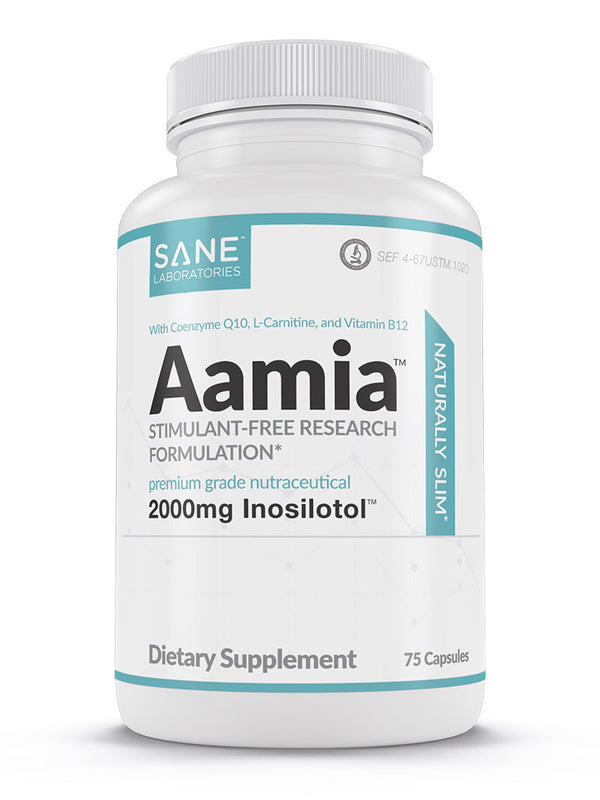Dealing with high blood sugar or struggling to keep it in check? You’re definitely not alone. More and more people are facing the challenge of blood sugar control while trying to live an active, fulfilling life. But here’s the good news: with the right approach, you can naturally balance your blood sugar and still enjoy every moment.
Click here to learn more about Aamia and to place your order now while supplies last!
It’s common for people to experience fluctuations in blood sugar due to things like diet, exercise (or lack thereof), stress, and even genetics. These ups and downs can leave you feeling sluggish, moody, or drained. And over time, if left unchecked, they can lead to more serious health issues. But what if it didn’t have to be so hard?
Imagine waking up feeling refreshed, energized, and ready to take on the day without worrying about that energy crash after meals. Think about how great it would feel to stay on top of your favorite activities without the constant concern about your blood sugar levels. The trick? It’s all about adopting a few simple habits that can make a world of difference in how you feel and how your body manages blood sugar.
In this guide, we’ll walk you through some easy and effective ways to get your blood sugar under control naturally. These strategies aren’t just quick fixes; they’re practical tips designed to support your health for the long haul.
You’ll learn a lot more than just “eat healthy” and “exercise regularly.” We’ll dive into research-backed tips that go beyond the basics, offering you real solutions that work. From choosing the right nutrient-rich foods to making small but impactful lifestyle changes, we’ve got everything you need to start feeling better fast.
By the time you finish reading, you’ll have a clear path forward to help you feel more energized, avoid those dreaded blood sugar spikes and dips, and enjoy a lifestyle that supports your overall health and well-being.
So, if you’re ready to:
-
Boost your energy levels throughout the day
-
Prevent those annoying blood sugar swings that leave you feeling off
-
Embrace habits that support long-term health and vitality
Then stick with us—this guide is here to help you take control and feel your best.
Understanding Blood Sugar and Its Impact on Health
What is Blood Sugar, and Why is it Important?
Blood sugar, or blood glucose, is the primary source of energy for your body’s cells, tissues, and organs. Maintaining healthy blood sugar levels is crucial for your overall well-being, as it directly affects how your body functions. When blood sugar levels are too high or too low, it can lead to various health issues, including diabetes, heart disease, and nerve damage.
Your blood sugar levels are regulated by insulin, a hormone produced by the pancreas. Insulin helps glucose enter your cells, where it is used for energy. When your body doesn’t produce enough insulin or can’t use it effectively, blood sugar levels can rise, leading to hyperglycemia (high blood sugar). Conversely, when blood sugar levels drop too low, it results in hypoglycemia (low blood sugar).
Understanding how blood sugar impacts your health is essential for maintaining healthy blood sugar levels and preventing related health problems. By learning how to regulate blood sugar through diet, exercise, and lifestyle changes, you can reduce your risk of developing diabetes and other health conditions.
Signs and Symptoms of High Blood Sugar
Recognizing the Warning Signs of Hyperglycemia
High blood sugar, or hyperglycemia, can manifest in various ways, ranging from mild to severe symptoms. Recognizing these warning signs is crucial for seeking timely medical attention and preventing complications.
Here are some common signs and symptoms of high blood sugar:
-
Increased Thirst and Urination: Frequent urination and excessive thirst are classic signs of high blood sugar.
-
Fatigue and Weakness: Persistent tiredness and a lack of energy can indicate elevated blood sugar levels.
-
Blurred Vision: High blood sugar can cause the lenses in your eyes to swell, leading to blurred vision.
-
Headaches: Frequent headaches can be a symptom of fluctuating blood sugar levels.
-
Dizziness and Lightheadedness: Feeling dizzy or lightheaded can occur when blood sugar levels are not stable.
-
Rapid Heartbeat: An unusually fast heartbeat can be a sign of high blood sugar.
-
Confusion and Disorientation: Severe hyperglycemia can lead to confusion and difficulty concentrating.
If left untreated, high blood sugar can lead to serious complications, including diabetic ketoacidosis, nerve damage, and kidney damage. It’s essential to seek medical attention if these symptoms persist or worsen over time.
Lifestyle Tweaks to Help Naturally Lower Blood Sugar
Managing your blood sugar isn’t just about what you eat or how often you exercise. While those are key pieces of the puzzle, other areas of your lifestyle can have a big impact on your blood sugar levels, too. For instance, sleep quality and duration can significantly affect blood sugar levels, influencing insulin sensitivity and metabolic hormones. Small adjustments to your daily routines and environment can make a noticeable difference in how your body handles blood sugar.
Let’s dive into four simple lifestyle tweaks that can help you balance your blood sugar and live a healthier, more vibrant life:
1. Get Quality Sleep Every Night
Quality sleep is more important than you might realize when it comes to regulating blood sugar. Sleep quality and duration can significantly affect blood sugar levels and insulin sensitivity, with inadequate sleep increasing the risk of type 2 diabetes. When you’re not sleeping well, your body has a harder time using insulin properly, which can lead to higher blood sugar levels. Try to aim for 7 to 9 hours of restful sleep each night and build a relaxing bedtime routine to help you wind down.
Think about dimming the lights an hour before bed, putting away your phone or computer, and maybe reading a good book or practicing a little meditation. Your body (and your blood sugar) will thank you for it.
2. Stay Hydrated
Water plays a huge role in keeping blood sugar in check. Staying well-hydrated helps your kidneys flush out excess blood sugar from your body. Make it a habit to sip water throughout the day by keeping a water bottle close at hand.
For a little extra flavor, you can try adding slices of cucumber, lemon, or even a sprig of mint to your water. Herbal teas are another great option. The goal is to keep your body hydrated so it can maintain steady blood sugar levels with ease.
3. Cut Down on Toxins in Your Environment
Believe it or not, exposure to everyday toxins can mess with your hormones and how well your body uses insulin. To reduce exposure, consider switching to natural cleaning products, avoiding plastic containers when possible, and choosing organic personal care items.
Look for products free of harmful chemicals like phthalates and parabens. Creating a cleaner, toxin-free environment can help support healthier blood sugar levels and improve overall hormonal balance.
4. Keep Up with Regular Health Check-Ups
Staying on top of regular health check-ups with your doctor is key for long-term blood sugar management. Routine screenings can catch any early signs of trouble and keep your healthcare team in the loop with how you’re doing.
At your appointments, don’t hesitate to talk about your blood sugar levels, how your body is responding to insulin, or any concerns you have. This proactive approach will give you the support you need to stay on track and maintain healthy blood sugar levels over time.
These lifestyle tweaks offer a well-rounded approach to naturally lowering your blood sugar and supporting your overall health. Start making these changes today, and enjoy the benefits of feeling more balanced, energized, and in control!

Diet Tweaks to Help Naturally Lower Blood Sugar
High blood sugar doesn’t just impact your health—it can mess with your mood, too. Balancing your blood sugar is all about making smart choices when it comes to what’s on your plate. While cutting back on sugar and refined carbs is a solid strategy, there are other simple dietary tweaks that can make a big difference in blood sugar regulation.
By focusing on nutrient-rich foods and being mindful of what and how you eat, you can lower your blood sugar naturally and boost your overall well-being.
Here are five easy diet changes that will help you keep your blood sugar balanced and empower you to live your healthiest life:
1. Load Up on Non-Starchy Veggies
Non-starchy vegetables like spinach, broccoli, and bell peppers are not only full of fiber and nutrients, but they also help keep your blood sugar steady. Plus, they’re low in calories and carbs, making them a great option for filling up without the worry of sugar spikes.
Try adding a colorful variety of non-starchy veggies to every meal. Not only do they support digestion and keep you feeling full longer, but their rich mix of vitamins and minerals helps you stay on top of your blood sugar and overall health.
2. Add in Healthy Fats
Healthy fats—think avocados, nuts, seeds, and olive oil—are great for slowing down how quickly your body absorbs carbs, which helps prevent those sudden blood sugar spikes. These fats also keep you feeling full, making it easier to avoid overeating.
Consider drizzling some olive oil on your salad, snacking on almonds, or tossing chia seeds into your smoothie. Not only will these fats help stabilize your blood sugar, but they’ll also support your brain and heart health, giving you more energy to power through your day.
3. Prioritize High-Quality Proteins
Protein is your blood sugar’s best friend because it slows down how fast your body digests carbs. This means your blood sugar stays more stable. Focus on high-quality proteins like wild-caught fish, lean chicken, eggs, or plant-based options like tofu and tempeh.
Incorporate a good source of protein with every meal to curb cravings and keep your energy levels balanced throughout the day. The key to stable blood sugar is making sure your body gets enough protein consistently.
4. Pick Low-Fructose Fruits
Not all fruits are created equal when it comes to blood sugar. Some fruits are high in sugar and can cause those dreaded sugar spikes. Instead, opt for low-fructose fruits like berries, citrus, and kiwi. These fruits are packed with vitamins, antioxidants, and fiber, all while being gentle on your blood sugar.
Whether fresh or frozen, these fruits are easy to enjoy. Toss a handful of berries into your morning yogurt, or snack on an orange in the afternoon for a naturally sweet treat that won’t send your blood sugar soaring.
5. Don’t Forget Fermented Foods
Fermented foods like kimchi, sauerkraut, and unsweetened yogurt are packed with probiotics, which are great for your gut. Managing blood sugar levels regularly is crucial, especially when consuming fermented foods like unsweetened yogurt, as it supports blood sugar management. A healthy gut microbiome plays a key role in regulating blood sugar, improving insulin sensitivity, and reducing inflammation.
Try adding a spoonful of sauerkraut to your lunch or snacking on unsweetened yogurt with a sprinkle of berries. These probiotic-rich foods not only benefit your digestion but also give your blood sugar control a natural boost.
By making these simple changes to your diet, you can naturally lower your blood sugar and improve your overall health. Start sharing these tips with family and friends—it’s all about empowering each other to live healthier, happier lives!
6. Foods to Limit or Avoid for Better Blood Sugar Control
While a balanced diet is key to maintaining healthy blood sugar levels, certain foods can cause blood sugar spikes and worsen insulin resistance.
Here are six foods to limit or avoid for better blood sugar control:
-
Sugary Drinks: Beverages like soda, sports drinks, and sweetened teas and coffee can cause a rapid increase in blood sugar levels. Opt for water, herbal teas, or unsweetened beverages instead.
-
Refined Carbohydrates: Foods like white bread, pasta, and sugary snacks can spike blood sugar levels and worsen insulin resistance. Choose unrefined foods as much as possible.
-
Processed Meats: Foods like hot dogs, sausages, and bacon are high in saturated fat and sodium, which can worsen insulin resistance and increase blood pressure. Lean proteins like chicken, fish, and plant-based options are healthier alternatives.
-
Fried Foods: Fried foods like french fries, fried chicken, and doughnuts are high in calories, fat, and sodium, which can negatively impact blood sugar levels. Baking, grilling, or steaming your food can be healthier cooking methods.
-
High-Sugar Fruits: Fruits like mangoes, pineapples, and grapes are high in natural sugars, which can cause blood sugar spikes. Opt for low-fructose fruits like berries, citrus, and kiwi to satisfy your sweet tooth without the sugar rush.
-
Baked Goods: Foods like cakes, cookies, and pastries are high in refined carbohydrates, added sugars, and saturated fat, which can worsen insulin resistance and increase blood pressure. Homemade treats with less sugar are better choices.
By limiting or avoiding these foods, you can reduce your risk of developing insulin resistance and related health problems. Instead, focus on whole, unprocessed foods like lean proteins and non-starchy vegetables to help regulate blood sugar levels and promote overall health.
Activity Tweaks to Help Naturally Lower Blood Sugar
Staying active is one of the best ways to keep your blood sugar in check. Not only does regular exercise help your body use insulin more effectively, but it also helps control blood sugar levels, boosts your energy, and improves your overall well-being. By mixing up your physical activities, you can create a fun, balanced routine that helps manage your blood sugar while keeping things fresh.
Here are four simple ways to change up your activity routine and naturally lower your blood sugar:
1. Add Strength Training to Your Week
Building muscle is a powerful way to improve your body’s insulin sensitivity and lower blood sugar. Strength training—whether you’re lifting weights or doing bodyweight exercises like squats and push-ups—can make a huge difference. Aim to do strength training two to three times a week.
Exercises like lunges, resistance band work, and even simple push-ups help you gain muscle mass, which in turn helps your body handle blood sugar more effectively, lowering the risk of insulin resistance.
2. Take a Walk After Meals
One of the easiest and most effective ways to prevent blood sugar spikes is to take a quick 10-15-minute walk after each meal. Walking after meals can help lower blood sugar levels by improving insulin sensitivity and aiding glucose uptake by muscles. Walking gets your muscles moving, which helps them pull glucose from your bloodstream for energy, keeping your blood sugar from spiking after eating.
You don’t have to make it complicated—just a casual stroll around the neighborhood or walking your dog after breakfast, lunch, and dinner can make a big difference. This habit not only aids digestion but also helps stabilize your blood sugar throughout the day.
3. Try Interval Training for a Boost in Insulin Sensitivity
High-Intensity Interval Training (HIIT) can be a game-changer for blood sugar control. This involves short bursts of intense activity followed by periods of lower intensity or rest. For example, try sprinting for 20 seconds, followed by 40 seconds of walking, and repeat the cycle for about 10-15 minutes.
You can also apply this to other exercises like cycling, jumping rope, or bodyweight exercises. This type of training boosts your insulin sensitivity, helping your body manage blood sugar more efficiently.
4. Add Stretching or Yoga to Your Routine
Don’t underestimate the power of stretching or yoga when it comes to managing blood sugar. These gentle activities increase blood flow, reduce stress, and improve insulin sensitivity. Additionally, stretching or yoga can help manage high blood sugar levels, which is crucial for preventing serious health issues such as heart disease and diabetes. Simple stretches or yoga poses like the forward fold, seated twist, or bridge pose can make a noticeable difference.
Dedicate 10-15 minutes a day to stretching or practicing yoga to promote relaxation and better circulation. Not only will this help with blood sugar control, but it will also improve your overall flexibility and muscle tone.
These small but effective changes to your activity routine will not only help naturally lower your blood sugar but also boost your energy and keep you feeling balanced. Share these tips with friends and family, and let’s make movement a joyful part of a healthy life!
Frequently Asked Questions About Managing Blood Sugar Naturally
Balancing blood sugar levels can feel overwhelming at times, but with the right habits and knowledge, it’s absolutely possible to manage it naturally. To help guide you on this journey, we’ve gathered answers to some of the most common questions people have about lowering blood sugar naturally. Whether you’re just getting started or looking for ways to improve, these tips can help you take control of your health with confidence.
1. What are the best foods to eat for lowering blood sugar naturally?
Focusing on nutrient-dense, whole foods is key to managing blood sugar. The best foods to incorporate into your diet are non-starchy vegetables like spinach, broccoli, and cauliflower, as well as healthy fats like avocado, nuts, and seeds. Adding lean proteins such as chicken, fish, and plant-based options like lentils or tofu can also help. Foods high in fiber, such as legumes and nonstarchy veggies, are excellent for keeping your blood sugar steady. And don’t forget low-fructose fruits like berries and citrus—they provide sweetness without causing blood sugar spikes.
2. How often should I exercise to help manage my blood sugar levels?
Consistency is key when it comes to exercise and blood sugar control. Ideally, aim for 30 minutes of moderate physical activity at least five days a week. This could include walking, cycling, or swimming. Strength training two to three times a week is also highly beneficial for improving insulin sensitivity. Even simple activities, like taking a 10-15 minute walk after meals, can help prevent post-meal blood sugar spikes. The important thing is to find activities you enjoy, so you’ll be more likely to stick with them.
3. Can stress affect my blood sugar levels, and how can I manage it?
Yes, stress can absolutely impact your blood sugar levels. When you’re stressed, your body releases hormones like cortisol, which can cause blood sugar to rise. Managing stress is a crucial part of maintaining healthy blood sugar. Mindfulness practices like meditation, deep breathing exercises, or yoga can help lower stress levels. Regular physical activity, quality sleep, and finding time for hobbies or relaxation also go a long way in keeping stress (and your blood sugar) in check.
4. How long does it take to see results from natural blood sugar management?
It varies from person to person, but most people start noticing improvements in their blood sugar levels within a few weeks to a couple of months after making lifestyle and dietary changes. The key is consistency. Small, steady improvements in your habits—like adjusting your diet, exercising regularly, and managing stress—can have a lasting impact over time. Remember, natural blood sugar management is a long-term commitment, but the results are well worth the effort.
5. Are there any natural supplements that can help lower blood sugar?
Yes, certain natural supplements can support healthy blood sugar levels. Chromium, for example, has been shown in studies to help regulate blood sugar by improving how your body uses insulin. Magnesium, alpha-lipoic acid, and cinnamon are also popular choices for blood sugar support. However, it’s important to consult with a healthcare professional before adding any new supplement to your routine, especially if you’re already managing a health condition or taking medication.
6. How does drinking water help manage blood sugar levels?
Drinking water is essential for managing blood sugar levels. It helps the kidneys filter out excess sugar through urine, preventing high blood sugar levels. Staying hydrated is crucial, as it aids in the efficient removal of excess sugar from the bloodstream. Opting for water over sugary beverages can help maintain healthy blood glucose levels and support overall health.
By addressing these common concerns, you can take meaningful steps toward managing your blood sugar naturally. The key is patience and consistency, making small adjustments that can lead to big changes over time. Share these tips with friends or family, and remember, you’re not alone in this journey to better health!
Take Control of Your Health and Help Others Do the Same!
Lowering your blood sugar and boosting your overall health doesn’t have to be complicated. With a few smart changes to your diet, daily activities, and lifestyle, you can take charge of your well-being and feel more vibrant than ever.
Why not share these simple yet powerful tips with your friends and family? Spread the word on social media or send it through email—let’s inspire each other to live healthier, more balanced lives. When we work together, we can make healthy living contagious and help everyone feel their best. Let’s start a wellness movement!
Take SANE MD Aamia®for Blood Glucose Support
Aamia®is medically designed to naturally suppress appetite and aid weight loss by supporting blood glucose control and hormonal balance that helps burn belly fat instead of storing it.
Take five capsules daily to melt your belly fat, lose weight, feel great, and be happy!
Click here to learn more about Aamia and to place your order now while supplies last!
































